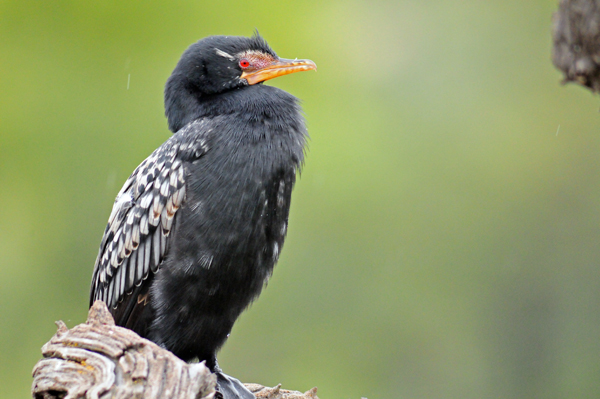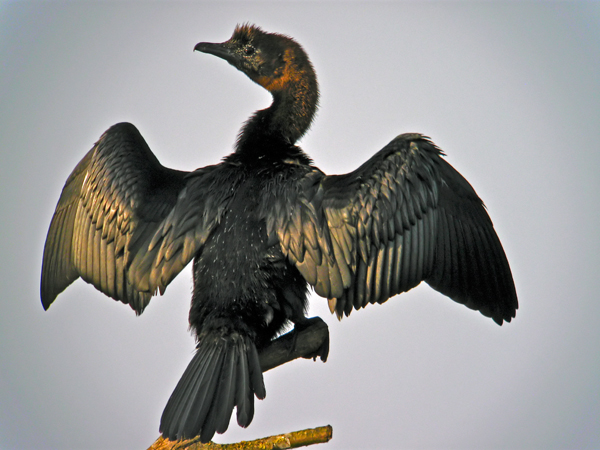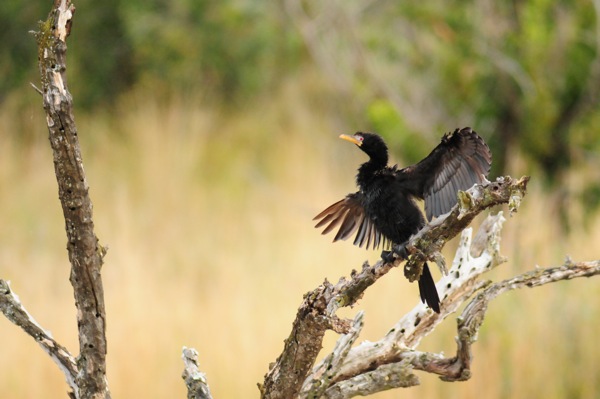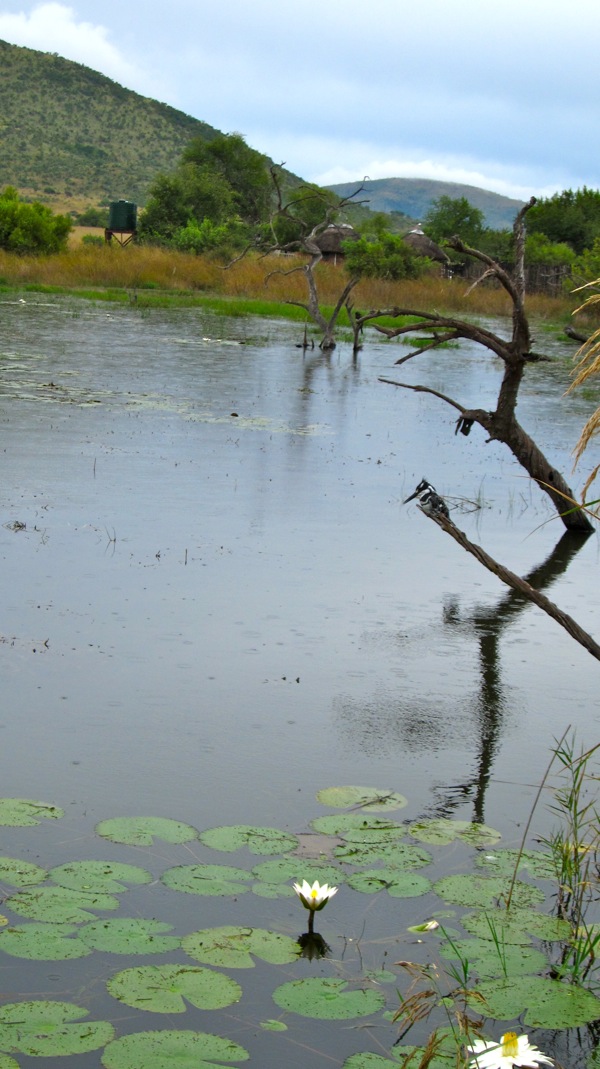Reed Cormorant in Spain
Spain’s only record of the Pygmy Cormorant (Microcarbo pygmaeus) is from a single cormorant collected in Catalunya in 1855, with no known records since. The large numbers of Pygmy Cormorants in Italy (particularly in the Po Delta in Northern Italy), their recent “overflow” trend to establish new satellite colonies (e.g. Neusiedlersee in Eastern Austria), Europe-wide protection and conservation efforts seems to bode well for this enigmatic little fisher. And I could well imagine that they are bound to turn up in Spain again; potentially even establishing colonies in places like the Delta del Ebro.

Pygmy Cormorant - note the darkly feathered face (lores) and the gently decurved bill. Digiscoped with Swarovski scope & Canon A590
But a recent article in Dutch Birding entitled “Reed Cormorant collected in Catalunya, Spain, in c. 1855” has put this lone record in a rather different light. The authors initially point out the almost obvious plumage and structural differences between the two species – bill shape, loral patterning and the patterning of the wing coverts.

Reed Cormorant (Microcarbo africanus)- note the black tipped wing coverts, open lores (with black feathered spots), and sharply decurved bill. Digiscoped with a Nikon D300s and Swarovski STM80HD
Having read the article earlier this year, I set about trying to get a few photos of the Reed Cormorants (Microcarbo africanus) while I was in South Africa last month; and to have a closer look at them. Funny, in my mind’s eye I had them as being rather a plain, uniform black with no greatly notable features other than being small, slender and black. Pretty much like our Pygmy Cormorants. But the reality (and the photos) surprised me. The adults really are beautiful with a strikingly scarlet eye, a yellow bill, and wonderful white snow-flakes on their wings.

Pygmy Cormorant - note the uniformly dark wing coverts. This feature is already clearly shown as a juvenile, and contrasts obviously with the "black flecked" appearance of the Reed Cormorant. Canon A590 Swarovski STM80HD
Young juvenile Reed Cormorants are typically duller; with a dark eye (changing to red at a fairly young age, though), darker bill, and lighter belly and breast. While the snowflaked wing coverts are not as dramatic, they always show the typical black tips to the feathers.
Found throughout sub-Saharan Africa, the Reed Cormorant is locally common at fish-rich inland fresh-water pools, typically avoiding the coastline apart from estuaries. The authors of the Dutch Birding article state that the closest known breeding colony of Reed Cormorants to Spain is at Banc d’Arguin in Mauritania. This “new” record makes it the first and only known record of the Reed Cormorant in Europe.



Despite the bird is certainly the species proposed, nothing is conclusive on its origin. In that time of XIX century there was a collector of the high society that had a large collection of birds still kept in a local museum. This cormorant could well have been one of those, hence captive origin cannot be fully discarded.
Hi Ricard, I had read of a few theories as to where it could have come from, but the authors of the article in Dutch Birding stood behind the theory that it was naturally there. Having said that, besides the high rarity of such a find, there is also the isotope analysis of the bird which suggested that it was from somewhere in Africa or – importantly – from the Iberian Peninsula. This does not contradict your point that it might have been from a live collection that was housed somewhere in the Iberian Peninsula for some time before ending up in the museum. If, however, it were to have gone directly from the collector to the museum, one would expect that the original label would have been correct (and not labelled as Pygmy).
Do you have any other info on the bird or its possible origins? I would be interested in adding it to the post or your posting it here in the comments section.
happy birding!